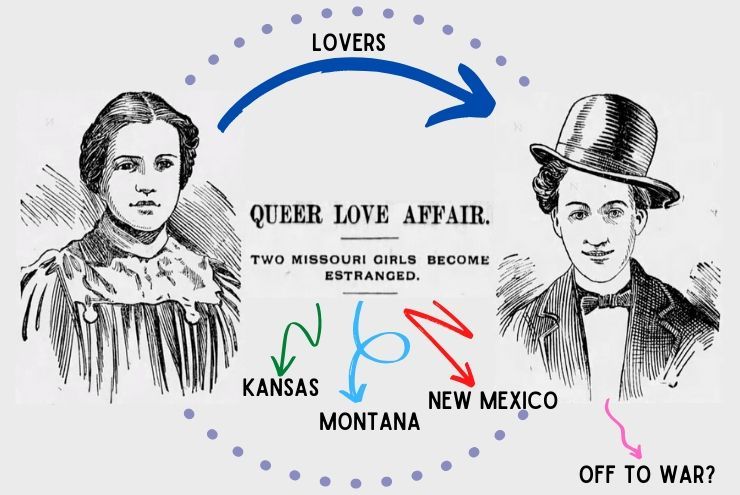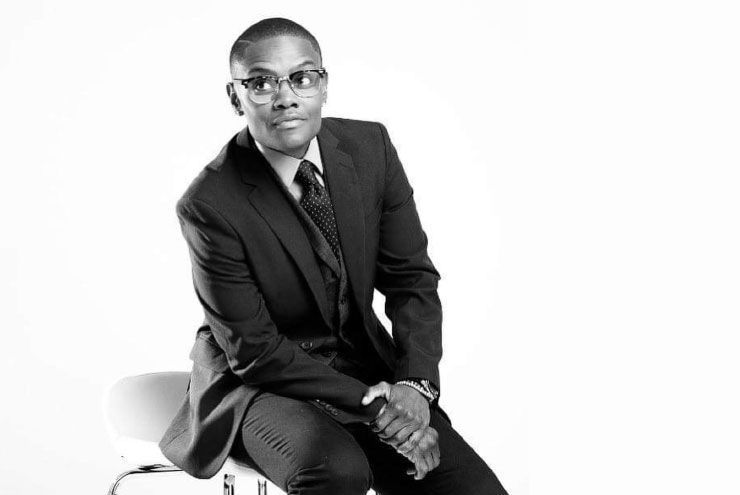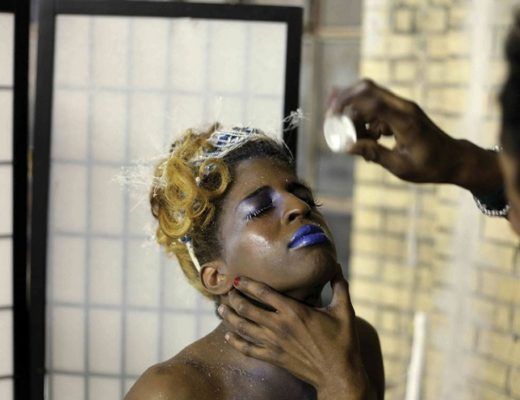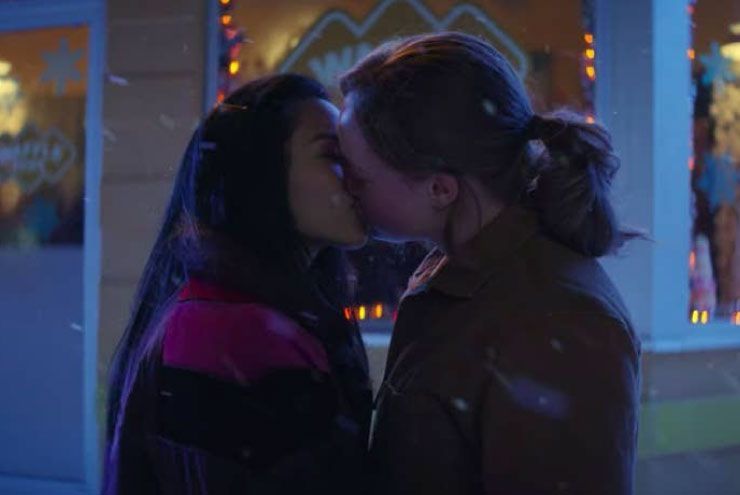A recovered newspaper clipping sheds light on 19th–century queer love, but brings more questions than answers.
By Barrett White
My love of history extends beyond my fascination with the Titanic disaster, I promise.
I met prolific historian JD Doyle several years ago. Doyle, based in Houston, is a Norfolk, Virginia, native who has spent his life cataloging LGBTQ history on his website, jddoylearchives.org, which was recently preserved by the Library of Congress for its importance to history and culture. Over the past several years, he and I have grown close from our fascination with history and the shared belief that where we came from informs who we are today.
There is no chance of a ho-hum conversation when JD’s number appears on your caller ID. Some of the most chewable and engaging talks I’ve had were with this scholar over Tex-Mex and while touring his collection.
A few weeks back, he called well into the evening, but there was something important he had to run past me, I was sure. While scouring the internet for queer history (as one does), JD had come across a newspaper clipping from 1898.
Snipped from the Neodesha Daily Sun in Neodesha, Kansas (pronounced “knee-oh-duh-SHAY,” by the way), was a story of Sapphic love, gender expression, and a family’s acceptance.
It was simply fascinating: The article describes two women, Adele Densmore, 21, and Ruth Latham, 18, the former of whom presented masculine (in her brother’s clothing). The two of them lived in nearby St. Joseph, Missouri and, per the article, were a romantic couple for all intents and purposes. There is some confusion, though. For example, the piece describes Densmore as the one who preferred to dress in men’s clothing, while the accompanying sketches label Latham as the one wearing a top hat with her hair cut short or swept under the hat.
Despite the minor inconsistency, the piece is rather touching: Presumably after a “lover’s quarrel,” Densmore donned men’s attire and set off to enlist as male in the army, where she hoped to be shipped off to war. Despite her parents’ misgivings, her mind was made up. That is, until her parents got her lover, Latham, to talk her out of it. Latham arrived, the two made up, and returned home. By the way, the couple was deeply, deeply in love.
The journalist, whose name does not appear on the version of the article recovered by Doyle, treats their romance with such care and respect that, if it were not for the grammar and lexicon, one might forget that they were reading something written during the Spanish-American War.
An endless assortment of questions ran through my head, including: Who were these women? And the journalist, was it normal to have reported on queer love with such tenderness in 1898, as opposed to what you might expect? Or was the journalist themselves queer, offering a kind treatment to the story because they, too, lived outside the societal norm? Adele Densmore, was she butch? Or is Densmore an example of transgender identity in the turn of the century?
Unfortunately, not much is known about Densmore and Latham. Other than this article in 1898, there’s no other mention of them in subsequent years. With some sleuthing, I learned that over the last century, the Neodesha Daily Sun went through several buy-outs before becoming the Derrick in present-day, but no further records on this story have survived the turnovers and hundred-plus years of time.
The question persists: Was there a queer underground in Mid-American society? While LGBTQ folks, of course, have always existed and have done so in every corner of the planet, there are certain assumptions that we have about Victorian and Edwardian societies. These assumptions remind us that though we have always been here, it has not always been safe to exist in public as ourselves.
Stuart Hinds is the co-founder of the Gay and Lesbian Archive of Mid-America and the curator of special collections at Miller Nichols Library at the University of Missouri-Kansas City. “I have not seen any documentation or evidence of a ‘queer underground’ during this time period in this part of the country,” Hinds says. “Places like New York are very well documented—see George Chauncey’s Gay New York, for example—but there’s a frustrating lack of evidence for the Midwest.”
“What is more prevalent at this time and in newspaper accounts are instances of cross-dressing,” Hinds continues. “For example, laws prohibiting appearing in public in clothing inappropriate for one’s sex were on the books in Kansas City as early as 1860. For various reasons these ‘transgressions’ tended to resonate with people very strongly.”
Perhaps this sheds a little more light on the Densmore-Latham story, considering Densmore’s affinity for men’s clothing. But why, then, the tender and affectionate writing? Why not a shocker piece?
As it turns out, the story was not first published in the Neodesha Daily Sun. It appears to have been syndicated to the Sun, as well as several other regional papers across the still-expanding United States including the Philipsburg Mail (Philipsburg, Montana), the Cynthiana Argus (Cynthiana, Indiana), and the San Juan County Index (Aztec, New Mexico).
The story first appeared in the Wichita Tribune (Wichita, Kansas), a Black-owned newspaper for Wichita’s burgeoning Black community. According to the Kansas African American Museum, by 1870 Wichita had begun the formation of The Black Belt, a prosperous “Black community [which] covered about four blocks between Main and Waco Streets, north of Central.” From this community came the Tribune, founded by Black Kansans who historians call “Exodusters”—or, freed African Americans who left the South, many of whom settled in Kansas.
This has left many LGBTQ historians to speculate if Densmore and Latham were not only queer, but African American? Though not immediately clear from the article, some think they may have been.
“This article is extraordinary for a few reasons: It is one of the earliest articles published in the Black press to discuss same-sex desire at such length and it displays several of the central themes which lesbian historians have formulated concerning women who loved women in the nineteenth century,” writes Christina Ann Woolner in her dissertation, “The Famous Lady Lovers: African American Women and Same-Sex Desire from Reconstruction to World War II.” “Yet at the same time, it is unclear whether or not Latham and Densmore themselves were African American.”
She continues, “This article and the other human interest pieces that ran along side of it all later appeared in several other newspapers geared toward different demographics, which suggests that they were not written exclusively for the Wichita Tribune. Further, the young women and their families were not explicitly described as being African American, which would most likely have occurred if the article was not written specifically for the Tribune. However, the article did appear in the Black press first, and if it was written for the Tribune, the women’s race would not necessarily be stated.”
The Encyclopedia of Lesbian and Gay Histories and Cultures is more direct: On page 13 in what is but a blip about the article, Bonnie Zimmerman describes the couple flatly as “Adele Densmore and Ruth Latham, two African American women living in St. Joseph, Missouri.”
In no place have I been able to recover the name of the journalist, nor have I ever found any further information on the lives of Densmore or Latham.
I can only hope that looking back, these two women may have lived out their days happily in a community that, apparently, had no qualms about their love.
You can read the original article about Densmore and Latham’s relationship (as published by the Neodesha Daily Sun) on the Women Caught Masquerading as Men! landing page of JD Doyle’s history site—a tongue-in-cheek header, if I may say so—and scrolling down to 1898.







